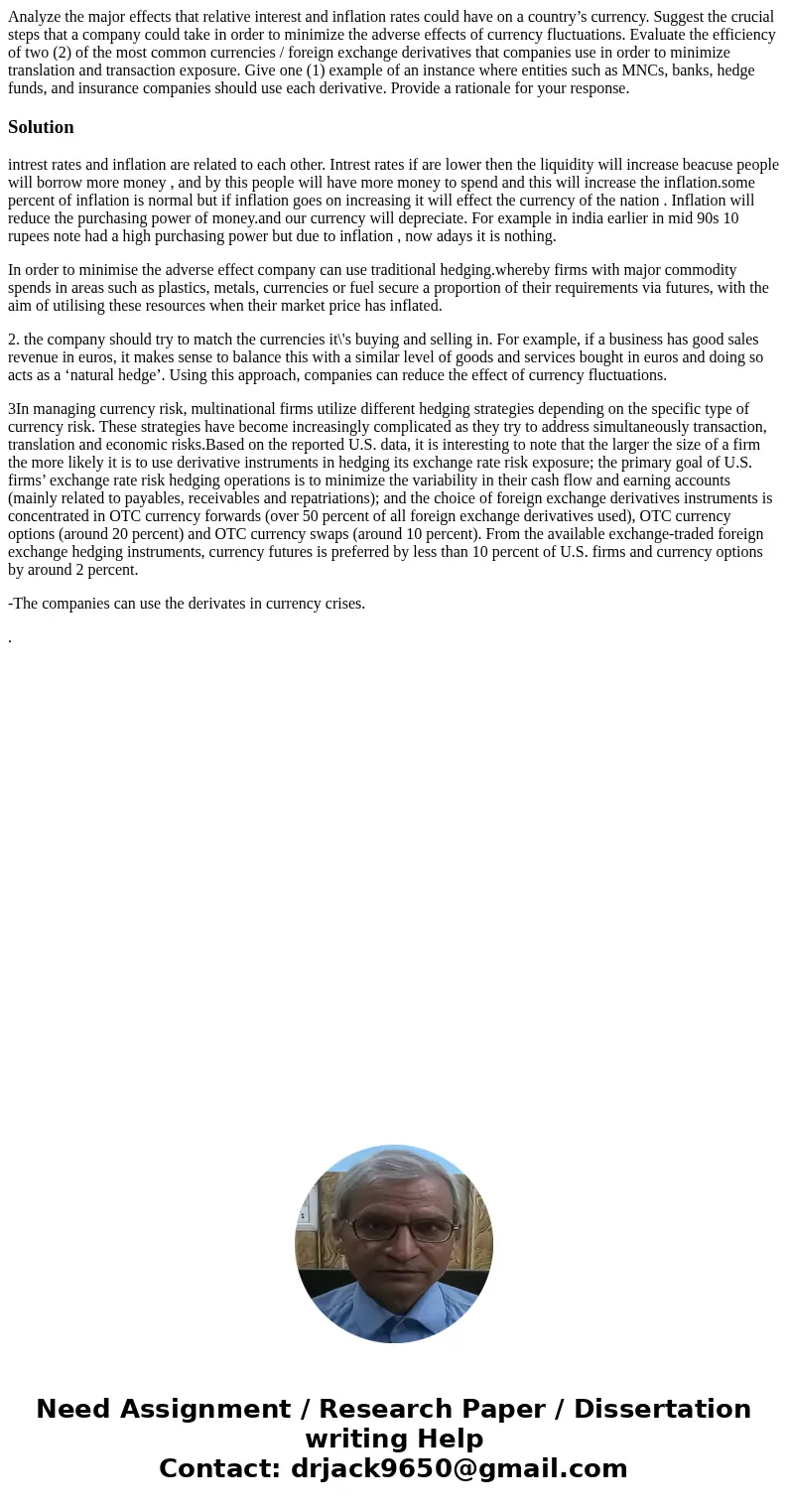Analyze the major effects that relative interest and inflati
Analyze the major effects that relative interest and inflation rates could have on a country’s currency. Suggest the crucial steps that a company could take in order to minimize the adverse effects of currency fluctuations. Evaluate the efficiency of two (2) of the most common currencies / foreign exchange derivatives that companies use in order to minimize translation and transaction exposure. Give one (1) example of an instance where entities such as MNCs, banks, hedge funds, and insurance companies should use each derivative. Provide a rationale for your response.
Solution
intrest rates and inflation are related to each other. Intrest rates if are lower then the liquidity will increase beacuse people will borrow more money , and by this people will have more money to spend and this will increase the inflation.some percent of inflation is normal but if inflation goes on increasing it will effect the currency of the nation . Inflation will reduce the purchasing power of money.and our currency will depreciate. For example in india earlier in mid 90s 10 rupees note had a high purchasing power but due to inflation , now adays it is nothing.
In order to minimise the adverse effect company can use traditional hedging.whereby firms with major commodity spends in areas such as plastics, metals, currencies or fuel secure a proportion of their requirements via futures, with the aim of utilising these resources when their market price has inflated.
2. the company should try to match the currencies it\'s buying and selling in. For example, if a business has good sales revenue in euros, it makes sense to balance this with a similar level of goods and services bought in euros and doing so acts as a ‘natural hedge’. Using this approach, companies can reduce the effect of currency fluctuations.
3In managing currency risk, multinational firms utilize different hedging strategies depending on the specific type of currency risk. These strategies have become increasingly complicated as they try to address simultaneously transaction, translation and economic risks.Based on the reported U.S. data, it is interesting to note that the larger the size of a firm the more likely it is to use derivative instruments in hedging its exchange rate risk exposure; the primary goal of U.S. firms’ exchange rate risk hedging operations is to minimize the variability in their cash flow and earning accounts (mainly related to payables, receivables and repatriations); and the choice of foreign exchange derivatives instruments is concentrated in OTC currency forwards (over 50 percent of all foreign exchange derivatives used), OTC currency options (around 20 percent) and OTC currency swaps (around 10 percent). From the available exchange-traded foreign exchange hedging instruments, currency futures is preferred by less than 10 percent of U.S. firms and currency options by around 2 percent.
-The companies can use the derivates in currency crises.
.

 Homework Sourse
Homework Sourse